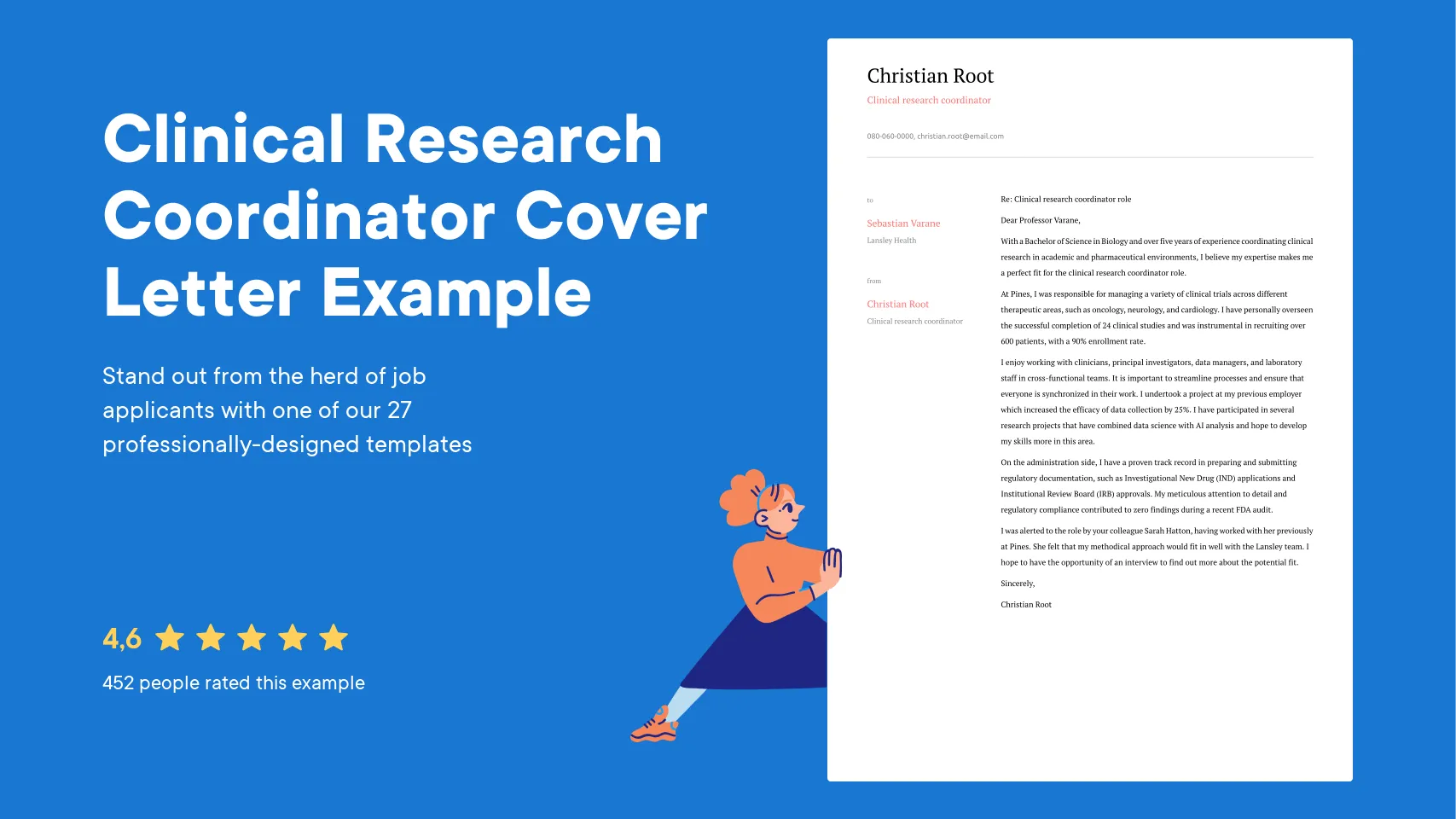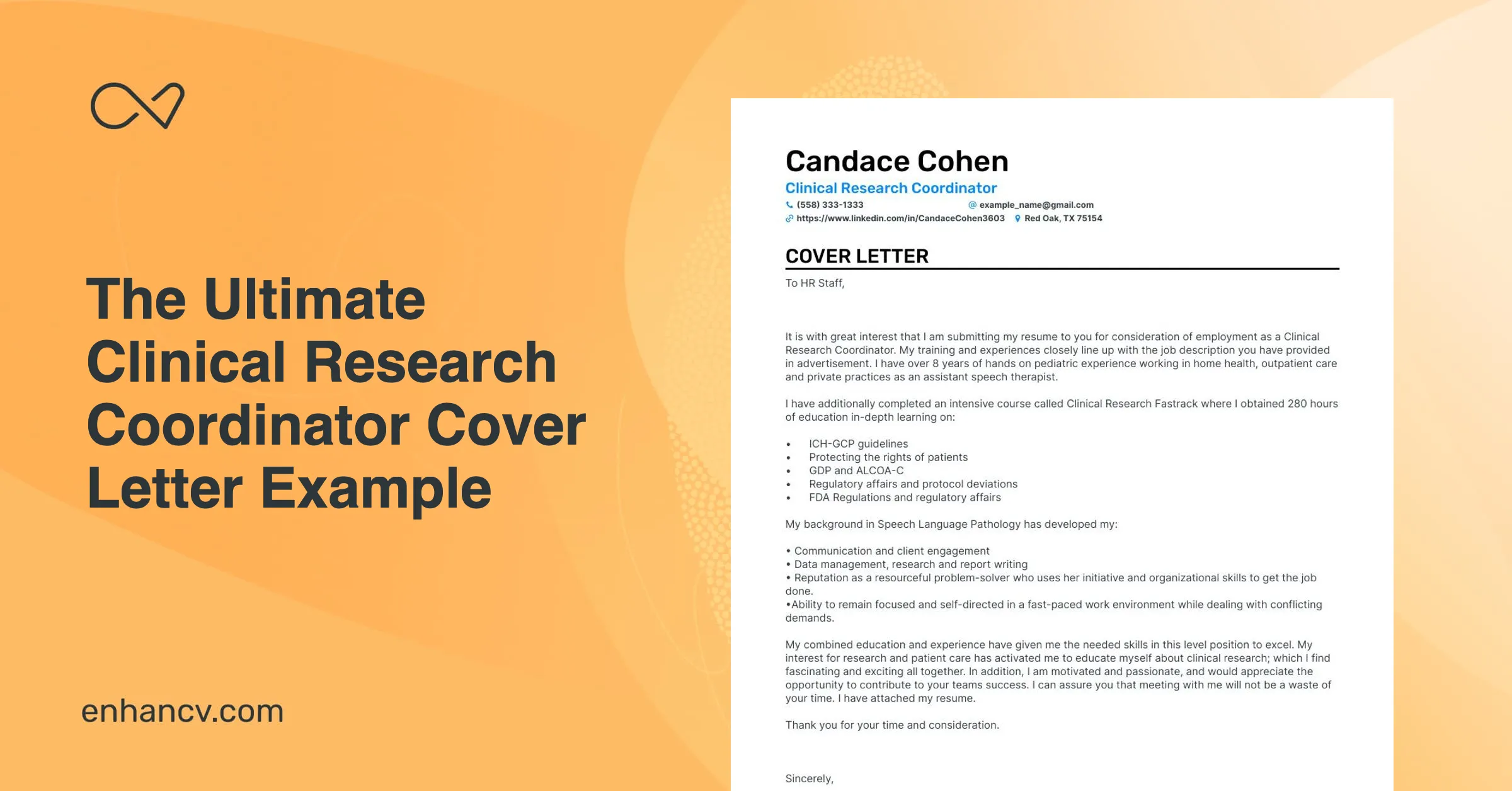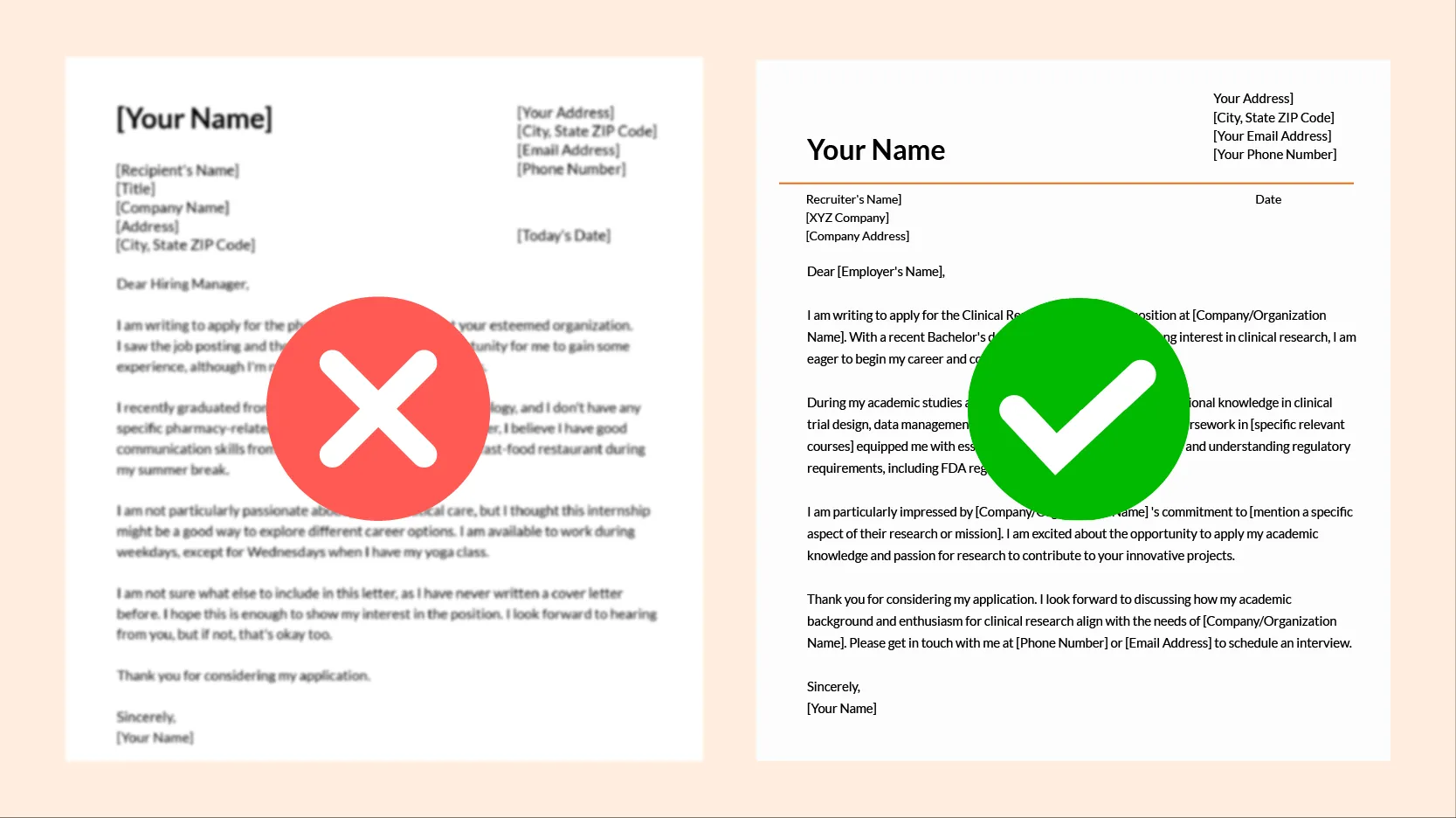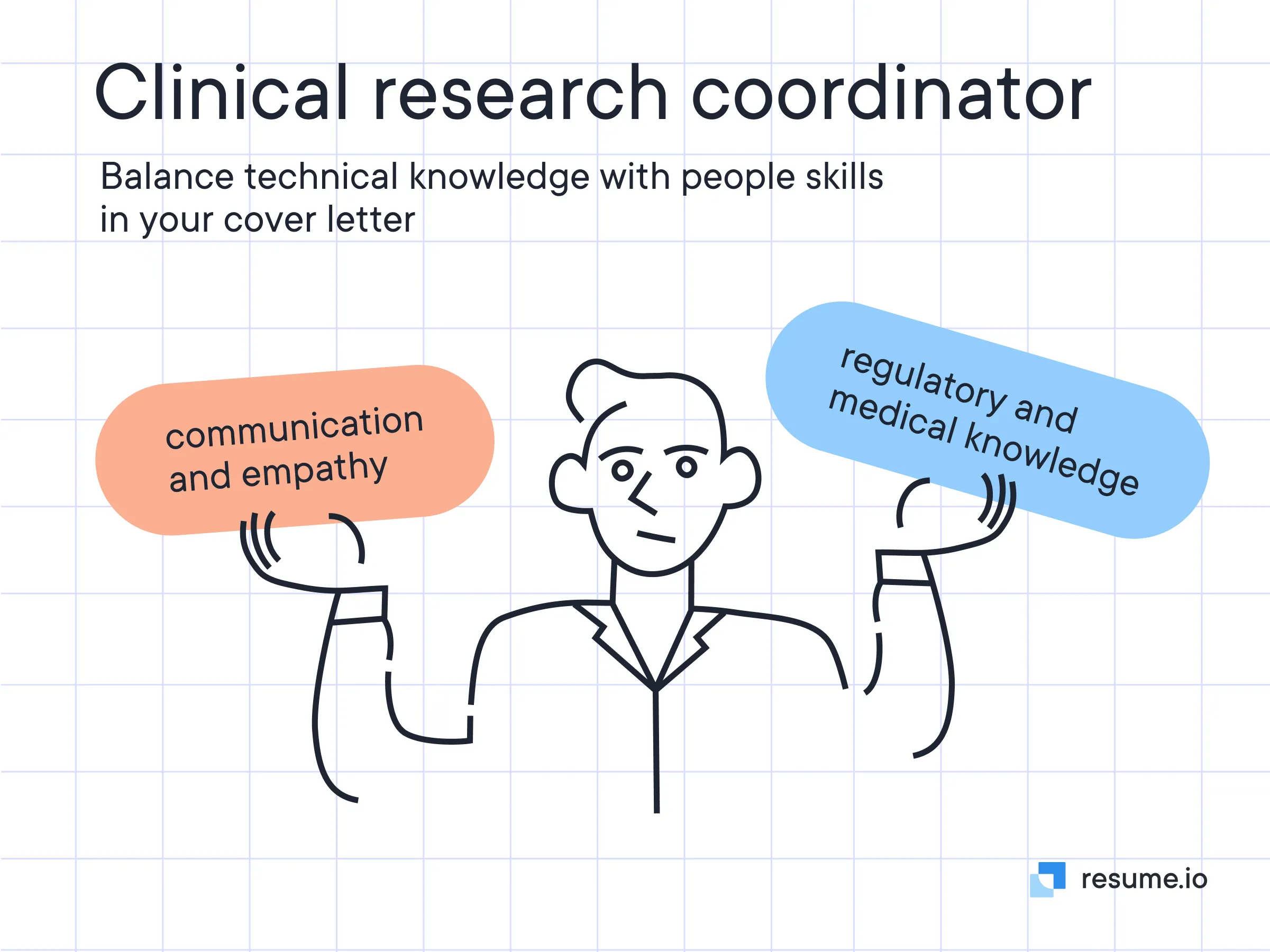Understanding the Research Coordinator Role
A research coordinator plays a vital role in the successful execution of research studies. They are the linchpin that connects researchers, participants, and the various administrative and logistical elements of a project. Effectively communicating your understanding of this role within your cover letter is crucial for making a positive first impression. Showing that you comprehend the intricacies of the position immediately sets you apart from candidates who may not fully grasp the responsibilities involved. When you showcase your understanding of the role, you also demonstrate that you have the essential qualities the hiring manager seeks. Therefore, highlight your insights into the research coordinator’s scope of responsibilities to make your cover letter more compelling.
Key Responsibilities of a Research Coordinator
Research coordinators juggle a variety of tasks to keep research projects on track. These tasks may vary from study to study but may include managing patient recruitment and retention, data collection, data entry, and ensuring adherence to research protocols. They also serve as a key contact for study participants, answering questions and providing support. Many coordinators also have administrative duties, like managing budgets, ordering supplies, and coordinating with other departments. These duties require strong organizational and interpersonal skills.
Essential Skills for Research Coordinators

The most effective research coordinators possess a blend of hard and soft skills. Strong organizational skills are essential for managing multiple tasks and deadlines. Excellent communication skills, both written and verbal, are crucial for interacting with researchers, participants, and other stakeholders. Attention to detail is critical for data accuracy and adherence to protocols. Problem-solving skills are needed to address any challenges that arise during the course of the study. Additionally, proficiency in relevant software, such as data management systems, is often required. Experience in the industry or research setting is also preferred.
Top 5 Research Coordinator Cover Letter Tips
Writing a compelling cover letter is an essential step in the job application process. Your cover letter serves as your introduction to the hiring manager and provides you with the opportunity to highlight your qualifications and demonstrate your interest in the role. By following these five tips, you can create a cover letter that stands out and increases your chances of getting an interview.
Highlighting Relevant Experience
The most successful cover letters emphasize your relevant experience, making it easy for the hiring manager to see your qualifications at a glance. Instead of merely listing your past job duties, focus on the skills and accomplishments that align with the job description. For example, if the job posting mentions patient recruitment, discuss your experience in recruiting and retaining participants. If you have experience with a particular research protocol, mention it specifically. Tailor your descriptions to mirror the requirements of the job, and you’ll increase your chances of being noticed. Remember to back up your claims with specific examples to provide tangible proof of your experience.
Quantifying Achievements with Data

While describing your experiences is important, quantifying your achievements with data makes your cover letter even more impactful. Whenever possible, include specific numbers and metrics to showcase your accomplishments. Instead of saying you “managed a clinical trial,” state that you “successfully managed a Phase III clinical trial involving 200 patients.” Instead of claiming you “improved patient retention,” specify that you “increased patient retention rates by 15%.” Providing quantifiable results offers a clearer picture of your contributions and makes it easier for the hiring manager to assess your value.
Tailoring Your Letter to the Job Description
One of the most effective strategies for cover letter success is tailoring your letter to each specific job description. Generic cover letters are quickly dismissed. Read the job description carefully and identify the key skills, qualifications, and experiences the employer is seeking. Then, in your cover letter, highlight the aspects of your background that directly address those requirements. This shows the hiring manager that you understand the role and have what it takes to succeed. Customize your letter to each application, and you’ll significantly improve your chances of getting an interview.
Demonstrating Passion and Enthusiasm
A cover letter is more than just a summary of your qualifications; it’s also an opportunity to showcase your personality and enthusiasm for the role. Express your genuine interest in the research coordinator position and the organization. Explain why you are excited about the opportunity and what motivates you. Share any relevant personal experiences or interests that demonstrate your commitment to research. This genuine enthusiasm can make a positive impression and help you stand out from other applicants. Demonstrate your excitement and passion.
Proofreading and Formatting

Before you submit your cover letter, meticulously proofread it for any errors in grammar, spelling, and punctuation. Typos and grammatical errors can undermine your credibility and make you appear careless. In addition to proofreading, pay attention to the formatting of your letter. Use a professional font, such as Times New Roman or Arial, and maintain consistent formatting throughout. Ensure your letter is easy to read and visually appealing. A well-formatted, error-free cover letter shows that you pay attention to detail and take pride in your work.
Cover Letter Structure
Structuring your cover letter effectively can help you present your qualifications and make a strong impression on the hiring manager. Following a standard format will help you craft a clear and concise letter.
Header and Contact Information
Your cover letter should begin with a header that includes your contact information, such as your name, phone number, email address, and LinkedIn profile (optional). Include the date and the hiring manager’s name and title (if known). Ensuring these details are accurate is key, allowing them to easily reach you.
Professional Salutation

Start your cover letter with a professional salutation, such as “Dear Mr./Ms. [Last Name]” if you know the hiring manager’s name. If you are unsure of the hiring manager’s name, a general salutation like “Dear Hiring Manager” is acceptable. Avoid using generic greetings like “To Whom It May Concern.”
Body Paragraphs and Content
The body of your cover letter should consist of a few well-crafted paragraphs. In the first paragraph, state the position you are applying for and how you learned about the opportunity. The subsequent paragraphs should highlight your relevant experience, skills, and accomplishments, demonstrating how you meet the requirements outlined in the job description. Always be sure to incorporate the five tips above to make your letter even stronger. Consider adding a paragraph about what interests you about the organization or the position. Close the body by reiterating your interest and thanking the reader for their time and consideration.
Closing and Call to Action
Conclude your cover letter with a professional closing, such as “Sincerely” or “Best regards.” Below your closing, include your typed name. End with a call to action, such as “I am eager to discuss my qualifications further and would welcome the opportunity for an interview.” This shows that you are keen to be considered for the position.
Common Mistakes to Avoid

Several common mistakes can undermine your chances of getting an interview. Being aware of these pitfalls will allow you to steer clear of errors in your application.
Generic Content
Avoid using generic, boilerplate content in your cover letter. Generic cover letters that could apply to any job show a lack of genuine interest and effort. Tailor your letter to each position by highlighting the specific skills, experiences, and accomplishments that align with the job requirements. Customize the content to reflect your understanding of the organization and the role. Remember, a well-crafted, personalized cover letter is far more effective than a generic one.
Typos and Grammatical Errors
Typos and grammatical errors make you seem unprofessional and careless. These mistakes can create a negative first impression on the hiring manager and may result in your application being rejected. Thoroughly proofread your cover letter before submitting it. Use a grammar checker and, if possible, have someone else review your letter. Taking the time to ensure your cover letter is free of errors demonstrates your attention to detail and professionalism.
Failing to Address the Employer’s Needs

The primary purpose of your cover letter is to demonstrate how your skills and experience meet the employer’s needs. A cover letter that fails to address the specific requirements outlined in the job description is less likely to get noticed. Read the job description carefully and identify the key skills and qualifications the employer is seeking. Then, in your cover letter, explicitly state how your background aligns with those needs. Provide specific examples of your accomplishments. When you address the employer’s needs directly, you demonstrate that you understand the role and are a strong candidate.
Examples of Strong Research Coordinator Cover Letters
Reviewing examples of strong research coordinator cover letters can provide inspiration and guidance when crafting your own. Seek out examples online and pay attention to how other applicants have highlighted their skills, experience, and accomplishments. Note how they structure their letters, use specific examples, and tailor their content to the job description. Analyze what works and adapt those elements to your own cover letter to make it a standout. By examining successful examples, you can gain valuable insights and enhance the effectiveness of your own application.
